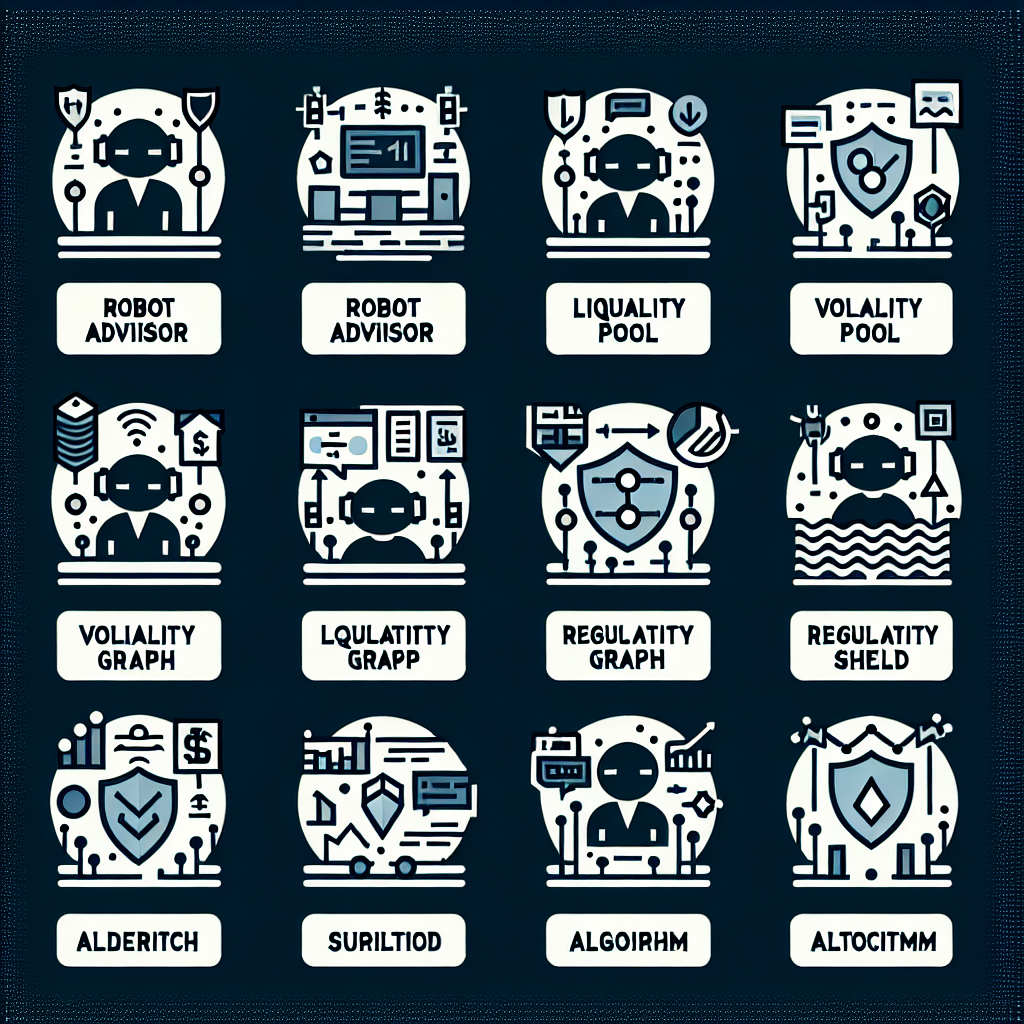Mở bài
Chủ đề Role Of Public Transportation In Reducing Urban Congestion xuất hiện dày đặc trong IELTS Writing Task 2 vì chạm tới vấn đề toàn cầu: tắc nghẽn đô thị, ô nhiễm và phát triển bền vững. Thí sinh thường phải thảo luận giải pháp, đánh giá tính khả thi của xe buýt/metro miễn phí, so sánh đầu tư giao thông công cộng với mở rộng đường. Trong bài viết này, bạn sẽ học được: 3 bài mẫu hoàn chỉnh (Band 5-6, 6.5-7 và 8-9), phân tích chấm điểm theo 4 tiêu chí chính thức, từ vựng trọng tâm, cấu trúc câu ghi điểm cao và checklist viết nhanh – chuẩn chiến lược phòng thi.
Nội dung bài viết
- Mở bài
- 1. Đề Bài và Phân Tích
- 2. Bài Mẫu Band 8-9
- Phân Tích Band Điểm
- Tại Sao Bài Này Đạt Điểm Cao
- 3. Bài Mẫu Band 6.5-7
- Phân Tích Band Điểm
- So Sánh Với Bài Band 8-9
- 4. Bài Mẫu Band 5-6
- Phân Tích Band Điểm
- Học Từ Những Lỗi Sai
- Cách Cải Thiện Từ Band 6 Lên Band 7
- 5. Từ Vựng Quan Trọng
- 6. Cấu Trúc Câu Điểm Cao
- 7. Checklist Tự Đánh Giá
- Kết bài
Một số đề thi thực tế (được đăng và thảo luận trên các nguồn uy tín như IELTS Liz, IELTS-Blog, British Council/IDP):
- “The best way to reduce traffic congestion in cities is to provide free public transport operating 24/7. To what extent do you agree or disagree?”
- “Some people believe that improving public transportation is the most effective way to reduce traffic in cities, while others think building more roads is better. Discuss both views and give your opinion.”
- “Public transport should be free for all citizens and funded by the government. Is this a positive or negative development?”
Bài viết sẽ chọn đề phổ biến thứ nhất (miễn phí 24/7) để phân tích sâu vì phù hợp trực tiếp với role of public transportation in reducing urban congestion, đồng thời cung cấp thêm góc nhìn để ứng biến với các biến thể đề.
1. Đề Bài và Phân Tích
The best way to reduce traffic congestion in cities is to provide free public transport operating 24 hours a day, 7 days a week. To what extent do you agree or disagree?
Dịch đề: Cách tốt nhất để giảm tắc nghẽn giao thông ở các thành phố là cung cấp giao thông công cộng miễn phí hoạt động 24/7. Bạn đồng ý hay không đồng ý ở mức độ nào?
Phân tích đề bài:
- Dạng câu hỏi: Opinion (Agree/Disagree – mức độ). Bạn có thể hoàn toàn đồng ý/không đồng ý hoặc chọn quan điểm cân bằng (partially agree).
- Thuật ngữ quan trọng:
- Free public transport: giao thông công cộng miễn phí (bus/metro/tram).
- 24/7: liên tục, không gián đoạn.
- Reduce congestion: giảm tắc nghẽn, không phải xóa bỏ hoàn toàn.
- Lỗi thường gặp:
- Lạc đề sang ô nhiễm không khí, biến đổi khí hậu mà không gắn kết với tắc nghẽn đô thị.
- Viết quá chung chung, thiếu cơ chế cụ thể: tần suất, mạng lưới, tích hợp vé, bãi đỗ park-and-ride.
- Sai mạo từ và giới từ: the congestion, in cities, on public transport.
- Cách tiếp cận chiến lược:
- Nêu tiêu chí “best way” (hiệu quả – cost-effectiveness – tính bền vững – khả năng mở rộng).
- Đưa bằng chứng/logic: giá miễn phí có chuyển đổi hành vi không? Hạ tầng có đáp ứng được không?
- Cân bằng luận điểm với hạn chế: ngân sách, công bằng, quá tải giờ cao điểm, giải pháp bổ trợ (congestion charge, teleworking).
 Đề IELTS về public transportation và urban congestion kèm phân tích yêu cầu
Đề IELTS về public transportation và urban congestion kèm phân tích yêu cầu
2. Bài Mẫu Band 8-9
Đặc điểm: Quan điểm rõ ràng, phát triển ý logic, ví dụ thuyết phục, từ vựng học thuật chính xác, kiểm soát câu phức tốt.
Essay (khoảng 300 từ):
Although making buses and metros free around the clock is an appealing slogan, I only partly agree that it is the best cure for urban gridlock. Free fares can shift behaviour for some groups, but without parallel measures on capacity, land use, and car disincentives, its impact will be uneven and possibly short‑lived.
To begin with, zero‑fare schemes lower the marginal cost of every trip and therefore nudge occasional drivers onto public transit, especially for off‑peak journeys and short commutes. When integrated with high‑frequency services and park‑and‑ride hubs, free transport can meaningfully reduce the number of cars entering central districts. Tallinn’s experiment in Estonia and several pilot programmes in Europe suggest that fare abolition does increase ridership, particularly among low‑income residents. However, ridership alone does not guarantee less congestion if road space remains cheap and plentiful.
The central weakness of a 24/7 free model is fiscal and operational. Farebox revenue often pays for maintenance and service upgrades; removing it can undercut reliability unless governments raise taxes or reallocate budgets. Moreover, if peak‑hour capacity is not expanded, free entry may crowd vehicles without attracting those drivers who value comfort, speed, and door‑to‑door convenience. For these users, road pricing, limited parking, and bus priority corridors are stronger levers.
Therefore, the most effective pathway is a policy bundle: frequent, reliable transit funded sustainably; targeted discounts rather than blanket free rides; and firm constraints on private car use in dense areas, such as congestion charging and transit‑oriented development. In this configuration, public transportation becomes not only cheaper but also faster and more predictable than driving, which is what truly dissolves urban congestion. Free fares, in isolation, are a useful catalyst—but not the best stand‑alone solution.
Phân Tích Band Điểm
| Tiêu chí | Band | Nhận xét |
|---|---|---|
| Task Response (Hoàn thành yêu cầu) | 8.5 | Trả lời trực tiếp “to what extent”, quan điểm rõ ràng (partly agree), phát triển đủ 2 mặt: lợi ích và hạn chế, đề xuất giải pháp gói chính sách. Ví dụ phù hợp, không lan man. |
| Coherence & Cohesion (Mạch lạc & Liên kết) | 8.5 | Bố cục 4 đoạn logic, câu chủ đề rõ, chuyển ý mượt (However, Therefore). Liên kết nguyên nhân–kết quả mạch lạc; từ nối đa dạng, không lạm dụng. |
| Lexical Resource (Từ vựng) | 8.5 | Từ vựng học thuật chính xác: farebox revenue, policy bundle, road pricing, transit-oriented development. Collocations tự nhiên; ít/không lỗi chính tả. |
| Grammatical Range & Accuracy (Ngữ pháp) | 8.0 | Câu phức, mệnh đề quan hệ, cụm phân từ dùng hiệu quả. Dấu câu và chia thì chính xác; cấu trúc song song gọn gàng. Không lỗi hệ thống. |
Tại Sao Bài Này Đạt Điểm Cao
- Trả lời đúng trọng tâm “best way” thay vì chỉ nói “good way”.
- Dùng khung đánh đổi chi phí – hiệu quả – vận hành, cho thấy tư duy phân tích.
- Đưa cơ chế hành vi: marginal cost, comfort, door-to-door convenience.
- Có giải pháp kết hợp: discounts mục tiêu, bus priority, congestion charge.
- Collocations chuyên ngành giao thông dùng chuẩn xác.
- Cấu trúc câu đa dạng, nhịp văn tự nhiên, không phô trương quá đà.
- Ví dụ quốc tế ở mức khái quát, tránh số liệu bịa đặt.
3. Bài Mẫu Band 6.5-7
Đặc điểm: Quan điểm rõ, lập luận hợp lý, có ví dụ nhưng chiều sâu phân tích và độ chính xác từ vựng/ngữ pháp chưa thật ổn định.
Essay (khoảng 260-270 từ):
Many people argue that making public transport free all day is the quickest way to fix city traffic. I agree to some extent because price is an important barrier, but I do not believe free services alone can solve congestion.
On the one hand, free buses and subways can attract students, retirees and low-income workers who currently use motorbikes or old cars. If a city also improves frequency and coverage, people may find it more convenient to leave their vehicles at home. For instance, when weekend fares were reduced in my city, my friends chose metro trips for shopping instead of driving, which probably helped reduce traffic in the city center.
On the other hand, there are clear limits. Without investment in more carriages and bus lanes, free entry will cause overcrowding, making the experience uncomfortable and pushing some users back to private cars. In addition, drivers who value flexibility will not switch unless parking becomes harder and roads are slower for cars. Therefore, cities should combine funding for reliable public transport with parking restrictions and congestion charges.
In conclusion, free public transport can be part of the solution, but the most effective approach is a combination of affordable, frequent services and policies that discourage unnecessary car use. Only by doing both can we significantly reduce urban congestion.
Phân Tích Band Điểm
| Tiêu chí | Band | Nhận xét |
|---|---|---|
| Task Response (Hoàn thành yêu cầu) | 7.0 | Quan điểm rõ, trả lời đúng “to some extent”, có đề xuất kết hợp. Thiếu chiều sâu về tài chính/vận hành so với bài 8-9. |
| Coherence & Cohesion (Mạch lạc & Liên kết) | 7.0 | Đoạn rõ, liên kết đủ dùng. Một số cầu nối còn đơn giản; ít mô tả cơ chế chi tiết. |
| Lexical Resource (Từ vựng) | 6.5 | Có collocations cơ bản (frequency, coverage, congestion charges). Phạm vi từ chưa thật đa dạng; vài chỗ diễn đạt chung chung. |
| Grammatical Range & Accuracy (Ngữ pháp) | 7.0 | Câu ghép và phức ổn; ít lỗi nhỏ. Chưa có nhiều cấu trúc nâng cao. |
So Sánh Với Bài Band 8-9
- Bài 8-9 phân tích “marginal cost”, “farebox revenue”, “policy bundle” sâu hơn; bài 6.5-7 nêu ý đúng nhưng khái quát.
- Từ vựng học thuật ở bài 8-9 phong phú và chính xác hơn.
- Bài 8-9 thể hiện logic nguyên nhân–hệ quả ở cấp chính sách; bài 6.5-7 chủ yếu ở góc độ trải nghiệm người dùng.
4. Bài Mẫu Band 5-6
Đặc điểm: Trả lời được đề nhưng ý phát triển còn mỏng, lặp từ, lỗi từ vựng/ngữ pháp dễ thấy, ví dụ chưa thuyết phục.
Essay (khoảng 255-265 từ):
Some people think making public transport free all day is the best way to stop traffic jams. I mostly agree because people will use bus more and leave their car. When something is free, everyone can take it and the roads become empty.
Firstly, if buses and trains are free, more passengers will come. Students and workers can save money and time. The government should make more buses to meet the need, and then traffic will be better. In my city, the price is high so people don’t go by bus much. If it is free, they will change quickly.
However, free transport also have problems. Buses can be very crowded and late, which makes people angry. Some people still prefer cars because they are more comfort and faster. But in general, I think free service is still the best because it helps poor people and reduces the pollutions and noise. Cities should use more budget to transport so that the system can work 24/7.
In conclusion, free public transport is the best solution for traffic congestion because many people will use it and there will be fewer cars.
Phân Tích Band Điểm
| Tiêu chí | Band | Nhận xét |
|---|---|---|
| Task Response (Hoàn thành yêu cầu) | 5.5 | Có quan điểm nhưng lập luận còn đơn giản, khẳng định quá mức (roads become empty), thiếu phân tích cơ chế và điều kiện. |
| Coherence & Cohesion (Mạch lạc & Liên kết) | 5.5 | Chia đoạn cơ bản; liên kết lỏng, lặp ý, thiếu ví dụ cụ thể. |
| Lexical Resource (Từ vựng) | 5.5 | Lặp từ, dùng từ chưa chính xác (more comfort, the pollutions), collocation yếu. |
| Grammatical Range & Accuracy (Ngữ pháp) | 5.5 | Lỗi chia động từ/điểm ngữ pháp (have problems, use bus), mạo từ/đếm được–không đếm được. Cấu trúc câu đơn giản. |
Học Từ Những Lỗi Sai
| Lỗi sai | Loại lỗi | Sửa lại | Giải thích |
|---|---|---|---|
| people will use bus more and leave their car | Collocation/mạo từ | people will use buses more and leave their cars | Danh từ đếm được số nhiều; đồng bộ số. |
| everyone can take it and the roads become empty | Khẳng định cực đoan | more commuters may switch, potentially easing peak-hour traffic | Tránh tuyệt đối hóa, dùng hedging. |
| The government should make more buses | Collocation | the government should run/add more bus services | “Make buses” không tự nhiên; “run/add services” chuẩn hơn. |
| free transport also have problems | Chia động từ | free transport also has problems | Transport (không đếm được) đi với has. |
| more comfort | Từ loại | more comfortable | Cần tính từ, không phải danh từ. |
| the pollutions | Danh từ không đếm được | pollution | Pollution không thêm s/es khi nói chung. |
| more budget to transport | Giới từ/collocation | more budget for public transport | Budget for sth; “public transport” cần rõ nghĩa. |
Cách Cải Thiện Từ Band 6 Lên Band 7
- Dùng bằng chứng và cơ chế: nêu giờ cao điểm, ưu tiên bus lanes, park-and-ride.
- Nâng collocations: peak-hour congestion, fare abolition, service reliability, road pricing.
- Đa dạng cấu trúc: mệnh đề quan hệ, cụm phân từ, câu điều kiện loại hỗn hợp.
- Kiểm soát mạo từ/giới từ: on public transport, in city centres, a reduction in congestion.
- Tránh khẳng định tuyệt đối; dùng hedging: may, can, tends to, to some extent.
5. Từ Vựng Quan Trọng
| Từ/Cụm từ | Loại từ | Phiên âm | Nghĩa | Ví dụ | Collocations |
|---|---|---|---|---|---|
| congestion charge | n | /kənˈdʒes.tʃən tʃɑːdʒ/ | phí tắc nghẽn | London introduced a congestion charge to reduce traffic. | introduce/implement/payin a congestion charge |
| fare abolition | n | /feə(r) ˌæbəˈlɪʃn/ | bãi bỏ vé | Fare abolition increased ridership among low-income groups. | partial/blanket fare abolition |
| farebox revenue | n | /ˈfeəbɒks ˈrev.ən.juː/ | doanh thu bán vé | Removing farebox revenue can strain budgets. | rely on/offset/reduce farebox revenue |
| park-and-ride | n | /ˌpɑːk ən ˈraɪd/ | gửi xe rồi đi công cộng | Park-and-ride facilities help commuters switch modes. | build/expand park-and-ride facilities |
| bus priority corridor | n | /bʌs praɪˈɒr.ə.ti ˈkɒr.ɪ.dɔː/ | hành lang ưu tiên bus | Bus priority corridors make services faster. | create/designate/extend bus priority corridors |
| transit-oriented development | n | /ˈtræn.zɪt ɔːr.i.en.tɪd dɪˈvel.əpmənt/ | phát triển định hướng giao thông công cộng | TOD reduces car dependency. | promote/plan/implement TOD |
| peak-hour | adj | /ˈpiːk ˌaʊə(r)/ | giờ cao điểm | Peak-hour services need extra capacity. | peak-hour congestion/demand/services |
| modal shift | n | /ˈməʊ.dl ʃɪft/ | chuyển dịch phương thức | Pricing can trigger a modal shift to buses. | trigger/encourage/achieve a modal shift |
| road pricing | n | /rəʊd ˈpraɪsɪŋ/ | định giá đường | Road pricing discourages unnecessary car trips. | introduce/expand road pricing |
| coverage (service) | n | /ˈkʌv.ər.ɪdʒ/ | độ phủ dịch vụ | Better coverage makes buses more usable. | improve/extend coverage |
| reliability | n | /rɪˌlaɪ.əˈbɪl.ɪ.ti/ | độ tin cậy | Reliability matters more than free fares. | improve/ensure/undercut reliability |
| cost‑effective | adj | /ˌkɒst ɪˈfek.tɪv/ | hiệu quả chi phí | A targeted subsidy is more cost‑effective. | prove/become cost‑effective |
| to undercut | v | /ˌʌn.dəˈkʌt/ | làm suy yếu, hạ thấp | Cutting fares might undercut investment. | undercut reliability/incentives |
| to disincentivize | v | /dɪs.ɪnˈsen.tɪ.vaɪz/ | làm giảm động lực | Parking limits disincentivize driving. | disincentivize car use |
| at scale | phrase | /ət skeɪl/ | ở quy mô lớn | Free transport is hard to fund at scale. | deliver/operate at scale |
Lưu ý phát âm: luyện theo IPA, chú ý trọng âm kép (transit-oriented, cost‑effective).
6. Cấu Trúc Câu Điểm Cao
- Câu phức với mệnh đề phụ thuộc
- Công thức: Mệnh đề chính + when/if/although/because + mệnh đề phụ.
- Ví dụ: Although free fares are attractive, they cannot reduce congestion without capacity upgrades.
- Vì sao ghi điểm: Tạo quan hệ nhân quả – nhượng bộ rõ ràng.
- Ví dụ bổ sung: If road space remains cheap, driving will persist. Because pricing shapes behaviour, cities should consider road charges.
- Lỗi thường gặp: Thiếu dấu phẩy sau mệnh đề phụ đứng đầu câu.
- Mệnh đề quan hệ không xác định (non-defining)
- Công thức: Danh từ, which/who + mệnh đề, …
- Ví dụ: Free transport, which can increase ridership, may still fail to cut congestion.
- Ghi điểm: Bổ sung thông tin, nhịp câu linh hoạt.
- Ví dụ: Park-and-ride, which supports modal shift, needs investment. Congestion charging, which is politically sensitive, is effective.
- Lỗi: Quên dấu phẩy, dùng that thay which.
- Cụm phân từ
- Công thức: V-ing/V-ed + cụm, mệnh đề chính.
- Ví dụ: Lowering fares, cities can encourage occasional drivers to switch.
- Ghi điểm: Cô đọng, tự nhiên.
- Ví dụ: Facing budget limits, governments prioritise reliability. Priced out of parking, commuters turn to buses.
- Lỗi: Sai chủ ngữ logic (dangling modifier).
- Câu chẻ (Cleft sentences)
- Công thức: It is/was + X + that/who + mệnh đề.
- Ví dụ: It is reliability that persuades drivers more than free fares.
- Ghi điểm: Nhấn mạnh trọng điểm.
- Ví dụ: It is peak-hour capacity that determines comfort. It was road pricing that changed behaviour in many cities.
- Lỗi: Lạm dụng gây gượng ép.
- Câu điều kiện nâng cao
- Công thức: If + should/were to + V, …; If + past perfect, … would + V (mixed).
- Ví dụ: If governments were to abolish fares without funding, services might deteriorate.
- Ghi điểm: Giả định chính sách tinh tế.
- Ví dụ: If cities had invested earlier, congestion would be lower now. If parking should remain cheap, few drivers will shift.
- Lỗi: Sai thì, nhầm would trong mệnh đề If.
- Đảo ngữ
- Công thức: Only when/Not until/Seldom + trợ động từ + S + V.
- Ví dụ: Only when road space is reprioritised do free fares reduce congestion.
- Ghi điểm: Nhấn mạnh, đa dạng nhịp văn.
- Ví dụ: Not until buses are reliable will commuters switch. Seldom does a single policy solve complex congestion.
7. Checklist Tự Đánh Giá
Trước khi viết:
- Xác định dạng đề (opinion/discussion/solution).
- Chốt luận điểm 1 câu: đồng ý một phần, hay phản đối, vì sao.
- Gạch đầu dòng 2-3 cơ chế tác động cụ thể (giá, năng lực, ưu tiên đường).
Trong khi viết:
- Mỗi đoạn 1 ý chính + 2-3 bằng chứng/cơ chế.
- Dùng collocations chủ đề giao thông công cộng.
- Hạn chế tuyên bố tuyệt đối; dùng hedging.
Sau khi viết:
- Soát mạo từ/giới từ: on public transport, in cities, a reduction in.
- Kiểm tra thì và chủ-vị: transport has, people have.
- Cắt lặp ý, thay bằng ví dụ/cụ thể hóa.
Quản lý thời gian:
- 3-4 phút phân tích đề.
- 5 phút lập dàn ý.
- 25 phút viết.
- 5-7 phút soát lỗi.
Kết bài
Chủ đề role of public transportation in reducing urban congestion yêu cầu bạn không chỉ “ủng hộ hay phản đối” mà còn phải chứng minh cơ chế: vì sao miễn phí 24/7 có thể tăng hành khách nhưng chưa chắc giảm tắc nếu thiếu năng lực giờ cao điểm, ưu tiên đường và công cụ định giá. Con đường cải thiện rõ ràng: nắm collocations chuyên đề, luyện cấu trúc câu nhấn mạnh lập luận, và học cách cân bằng lợi ích–chi phí trong bối cảnh chính sách đô thị.
Hãy luyện viết mỗi ngày 1 đề, đăng bài để nhận góp ý từ cộng đồng và tự chấm theo bảng tiêu chí. Với kỷ luật 3-4 bài/tuần, đa số học viên có thể tăng 0.5 band trong 6-8 tuần. Tài nguyên gợi ý: trang luyện đề của British Council, bài mẫu trên IELTS Liz và mục đề thi gần đây trên IELTS-Blog. Khi viết, luôn giữ trọng tâm vào role of public transportation in reducing urban congestion, dùng ví dụ gần gũi Việt Nam (làn BRT, metro, bãi đỗ gửi xe) để bài có chiều sâu thuyết phục.


